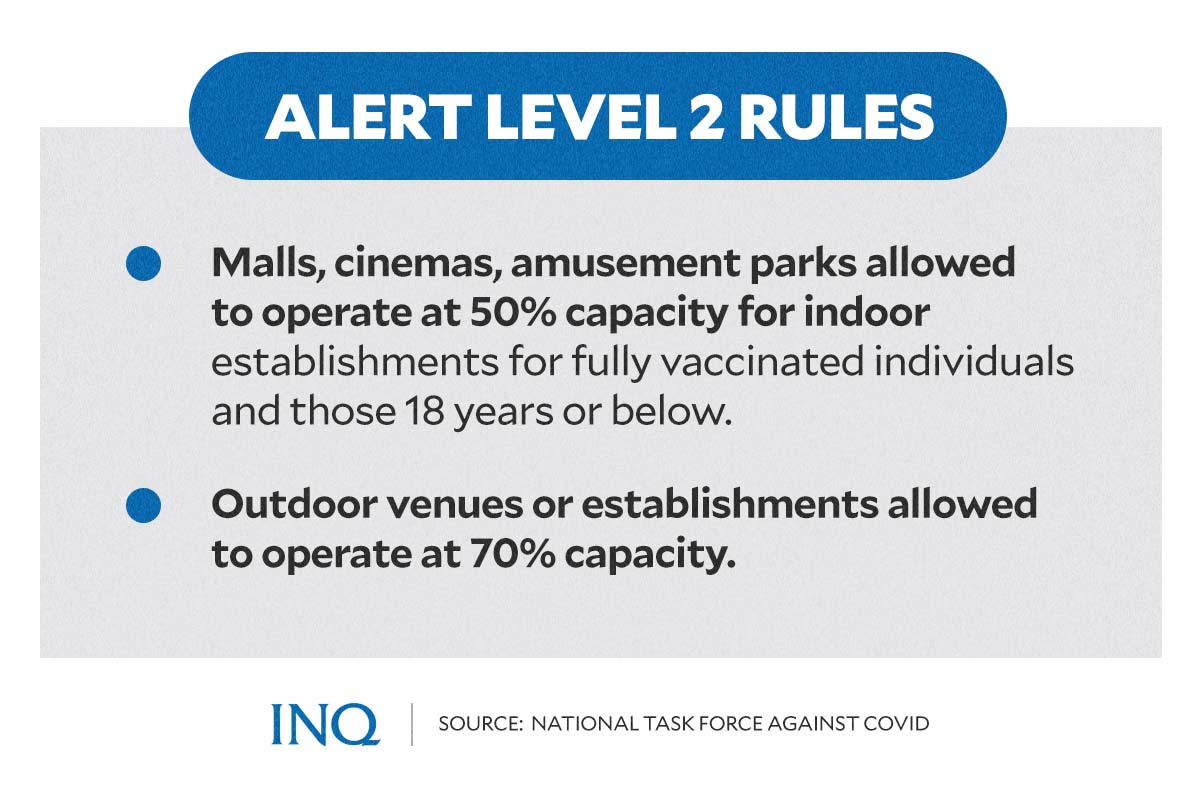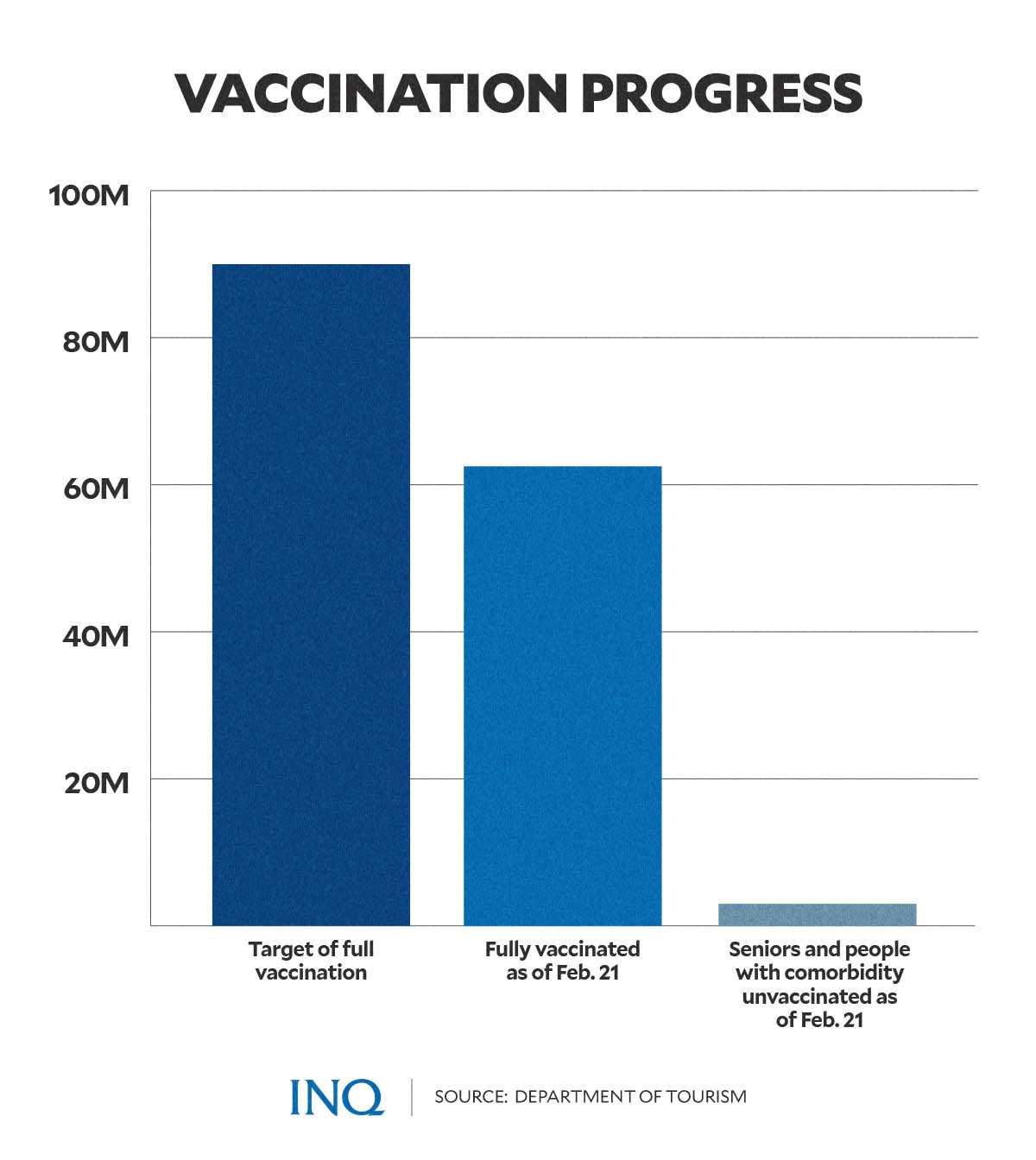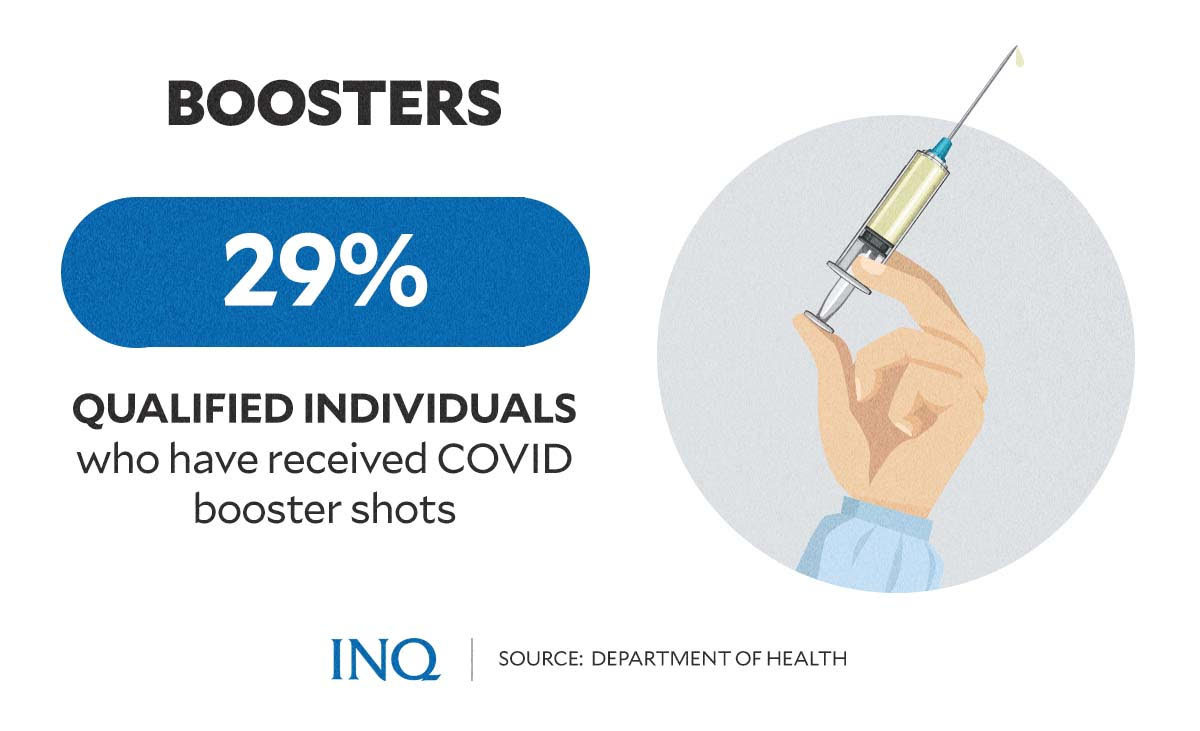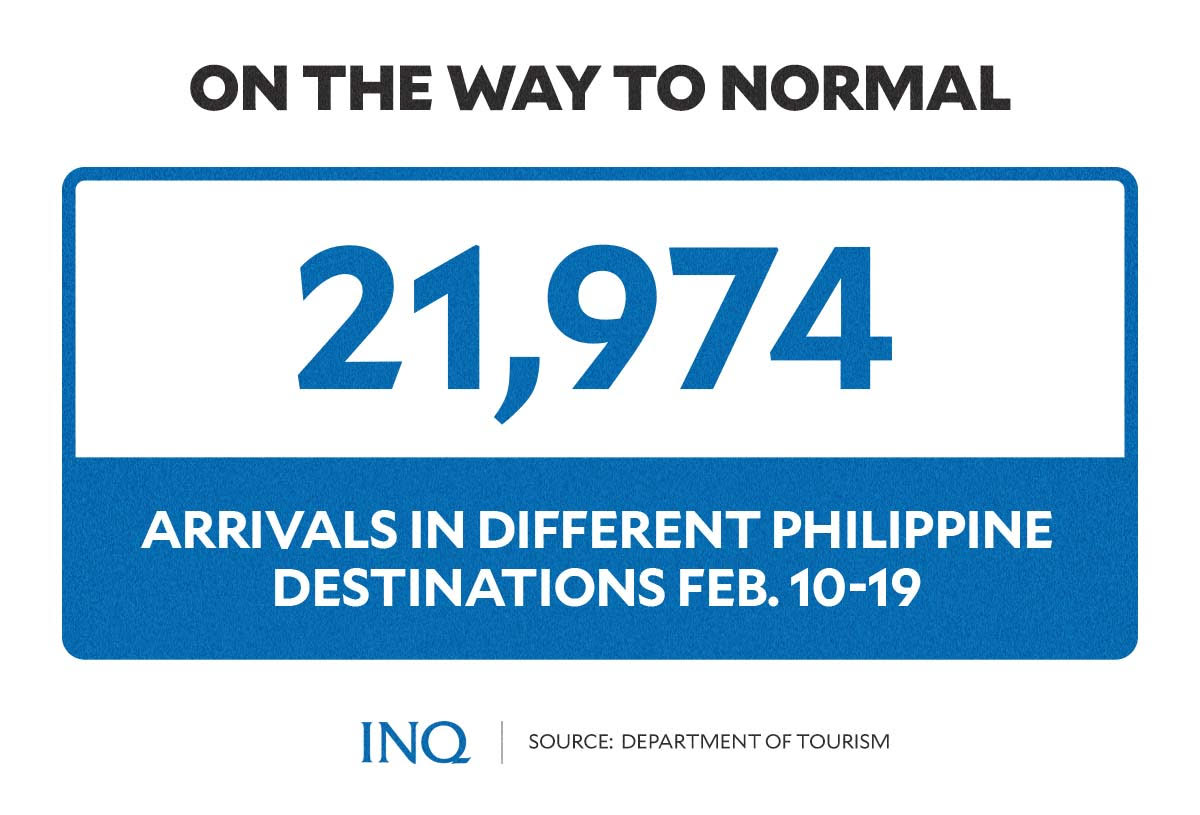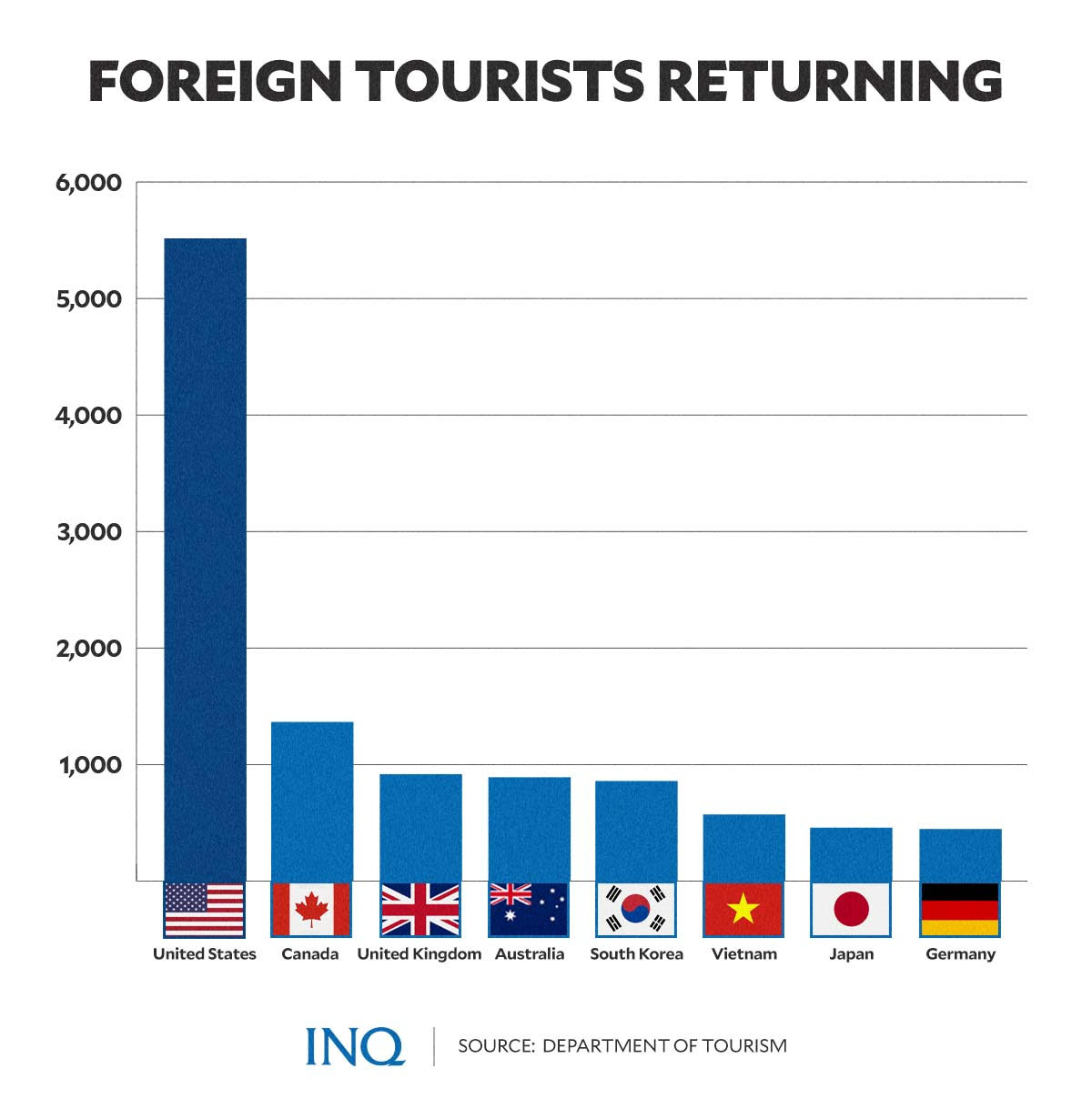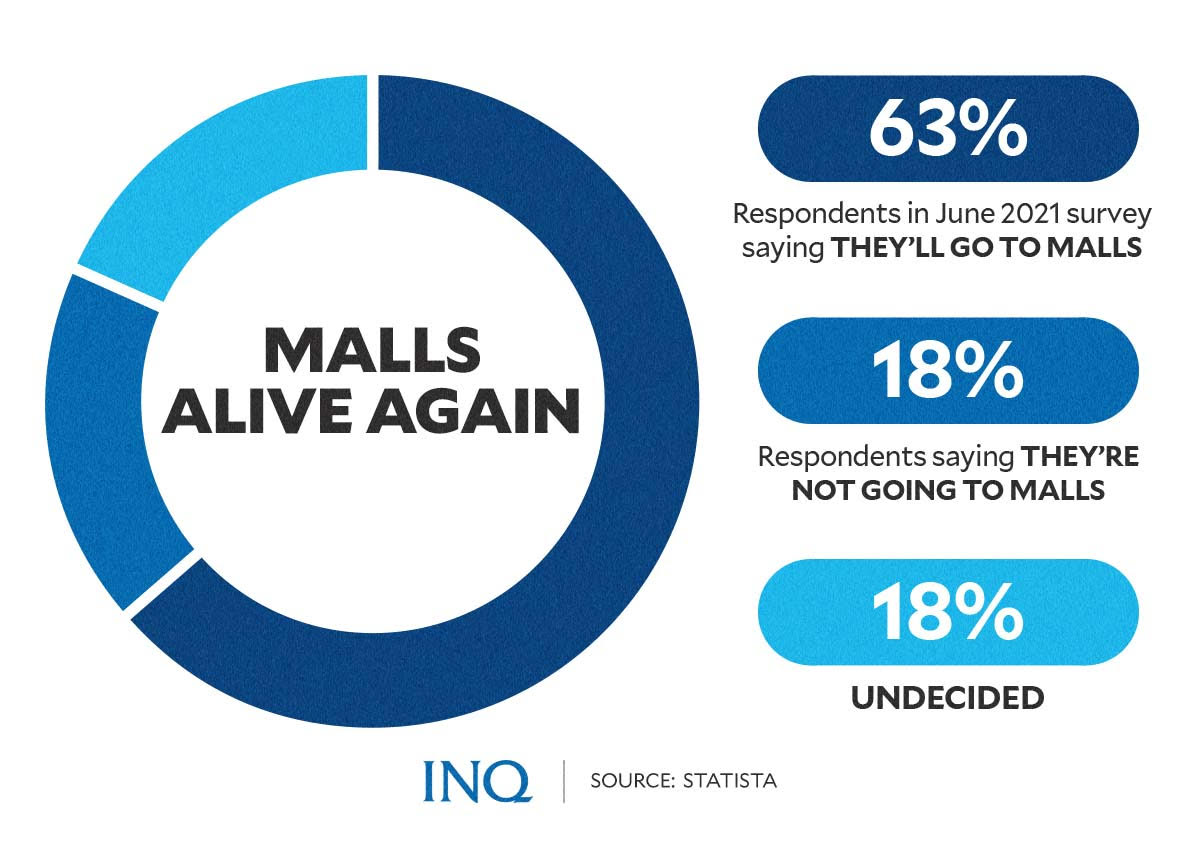Cautious optimism aired as lower COVID alert level looms
MANILA, Philippines—Earlier this month, new COVID-19 cases recorded in the country began dipping below the 10,000 mark, which has opened the discussion about downgrading Metro Manila to Alert Level 1 after Feb. 15.
However, the Metro Manila Council—composed of the National Capital Region’s 17 mayors—recommended retaining the COVID-19 Alert Level 2 status in the region, despite a downward trend in hospital care utilization rate and COVID-19 bed utilization rate.
READ: Metro Manila mayors want COVID-19 Alert Level 2 until end of February
Health Undersecretary Maria Rosario Vergeire has also appeared not inclined yet to support the shift to Alert Level 1, citing that case trends are still considered as being at moderate risk.
Infectious disease expert Dr. Rontgene Solante suggested keeping the Alert Level 2 status in Metro Manila since the transmission rate of the virus was still high.
READ: Raising Alert Level 1 over Metro Manila this Feb too early, too drastic – expert
The Inter-Agency Task Force (IATF) on Emerging Infectious Diseases on Feb. 14 has eventually decided to keep the region under Alert Level 2 until the end of the month (Feb. 28).
Article continues after this advertisementREAD: Metro Manila to stay under COVID-19 Alert Level 2 until Feb 28; Alert Level 3 up in 7 areas
As the end of the month draw near, talks about placing Metro Manila under the most lenient Alert Level 1 status next month emerged once again—and an important question has been raised.
Article continues after this advertisementIs Metro Manila, as well as other provinces, ready for an Alert Level 1 status?
Ready for Alert Level 1?
Business groups on Feb. 21 expressed support for the slide to Alert Level 1 of Metro Manila and other provinces, which would allow all businesses to reopen fully.
“We have to make use of this time while cases are down to really push the economy to move up,” said Presidential Adviser for Entrepreneurship Joey Concepcion at the online Pandesal forum.
“It will take a while for us to pay down the debt if our economy is sluggish, and that is why we are really pushing all sectors to open up. It is about time we open up,” Conception added.
READ: Biz groups want to open up economy, shift to alert level 1
Metro Manila mayors, earlier in the day, announced that they will meet on Feb. 22 and discuss their recommendation on the alert level in the capital region.
According to Romando Artes, Metropolitan Manila Development Authority officer in charge and general manager, the mayors will make a suggestion based on data from the Department of Health (DOH), IATF, and the National Task Force (NTF) Against COVID-19.
The group of mayors will also consider risk classification, health care utilization rate, and the downward trend in COVID-19 infections in coming up with its decision.
READ: Metro Manila mayors to discuss next alert level recommendation on Feb. 22
So, what do the experts think about de-escalating the alert level status in Metro Manila and other provinces starting March 1?
Solante, who had recommended keeping the alert level status for the second half of February, said it was now “a good time” to deescalate.
However, he emphasized that by doing so, it does not mean that the public should act as if everything is back to normal—and minimum public health standards, such as wearing of face masks and physical distancing, should remain despite a relaxed alert level.
“I think the trend is really improving, especially with the daily cases that we have and I think it’s a good time to really downgrade the alert level,” he said in an interview on Feb. 21 over TeleRadyo.
“At this point, I think we can downgrade to Alert Level 1 but, we still need to emphasize that it is still not yet back to normal,” he added.
READ: It’s a good time to downgrade COVID-19 alert level, says health expert
‘How doctors think’
While he agreed with Concepcion—that the government has “no choice” but to open up the economy to ensure growth and prevent the debt-to-GDP ratio from exceeding 60 percent—health reform advocate Dr. Tony Leachon pointed out some issues that still needed to be addressed before the government downgrades the alert level status in Metro Manila and some provinces.
“Mr. Concepcion was right,” Leachon said during a Facebook live stream on Feb. 21, “but we still have problems with the safeguards.”
“The problem now is the timing and then the steps to take in case there will be (another) surge (in new cases of COVID-19),” he added, partly speaking in Filipino.
Citing a book titled “How Doctors Think,” Leachon detailed his views on the matter as a physician.
He said that factors, such as the decreasing new COVID-19 cases as well as the lower occupancy rate in facilities in Metro Manila and some other provinces, point toward an Alert Level 1 status.
However, downgrading the alert level status would also mean that the region and provinces will be left with nothing for protection, as the government tries to address some factors which might continue to persist.
“First, the election campaigns. It’s not clear how the crowd will be controlled,” Leachon said.
“Number two, our vaccination progress. Third, our testing capacity remains low. So, if there will be a surge, we will have a problem,” he added.
Based on data presented by vaccine czar Carlito Galves Jr. on Feb. 21, there were 62,505,204 individuals who have been fully vaccinated against COVID.
This is 69 percent of the government’s target to vaccinate 90 million people.
In addition, there are still 3 million seniors and people with comorbidity who have yet to receive COVID vaccines.
READ: Daily COVID-19 vax count ‘dramatically reduced’ – Galvez
Data from DOH showed that only 29 percent of qualified individuals had already received COVID booster shots.
READ: Only 29 percent of eligible population have gotten booster shots, says DOH
“I’m just trying to tell you as a physician…objectively, if those [factors] were not around, [de-escalating to] Alert Level 1 is okay,” said Leachon.
“However, there are these variables that are hard to explain. That’s why in my opinion, Alert Level 2 should remain until election time,” he added.
Last Feb. 11, a group of doctors had warned the government against rushing the shift in COVID alert level status.
“The number of cases has been decreasing and we have been feeling that in hospitals. But the numbers are still high,” said Dr. Maricar Limpin, president of the Philippine College of Physicians.
“I guess what we want to say is the government should slow down in downgrading the alert level,” she said.
“We do not need to rush. Anyway, all people are now allowed to go out, so I think there is no reason for us to rush. We need to slow down more so that we will not witness another increase in COVID-19 cases,” Limpin added.
According to the health department, for the entire Philippines to de-escalate to the most lenient Alert Level 1, the case trend should be minimal to low risk.
This also means that health care utilization or usage of hospitals should also be at low risk, she said.
On top of these, vaccination in all regions should be over 70 percent among the target population, and safety standards must be observed.
READ: Metro Manila’s shift to Alert Level 1 hangs in the balance as case trend remains at moderate risk
The Philippines is currently at moderate risk for COVID-19.
READ: Philippines reverts to moderate risk status for COVID-19
Back to normal?
According to the DOH, Alert Level 1 could be considered as the “new normal” in the country.
“We are preparing for this so-called new normal. Let us remember that Alert Level 1 is the new normal in the country,” Vergeire said.
READ: DOH: Consider alert level 1 as ‘new normal’
While there has been no announcement yet from the government on the shift in alert level status, there have been some signs already of the “new normal” in the country.
One of these was the gradually increasing number of foreign visitors in the country.
The government last Feb. 10 started allowing the entry of fully vaccinated tourists from 157 countries that have visa-free arrangements.
READ: PH allows entry of foreigners from visa-required countries
Citing data from One Health Pass (OHP), Tourism Secretary Bernadette Romulo-Puyat reported a total of 21,974 inbound tourist arrivals in different airports across the country from Feb. 10 to 19.
The figure was composed of 10,074 overseas Filipino workers (OFWs) and 11,900 foreign tourists.
The breakdown of the international tourists who arrived in the country were:
- United States: 5,516 tourists
- Canada: 1,366 tourists
- United Kingdom: 918 tourists
- Australia: 891 tourists
- South Korea: 859 tourists
- Vietnam: 572 tourists
- Japan: 459 tourists,
- Germany: 447 tourists
On Feb. 21, the IATF also approved the recognition of the national vaccination certificates of Egypt, Maldives, Palau, Albania, Estonia, Greece, Malta, and Uruguay.
READ: PH accepts COVID-19 vaccination certificates of 8 more nations
More places to go
Aside from the tourist destinations, more people have been going to shopping malls since last year despite some restrictions.
Based on a survey conducted by consumer company Statista last June 2021, 63 percent of respondents from the Philippines said they were likely to go to a shopping mall in the next six months.
At least 18 percent said the opposite and stated that they were not likely to visit a shopping mall within the same period.
The other 18 percent said they were neither likely nor unlikely to go to a shopping mall.
READ: Share of Filipinos that are likely to go to a shopping mall in the Philippines in the next six months as of June 2021
Other than malls, some Filipinos have been looking forward to visiting two of the country’s most famous amusement parks, both of which are set to reopen this month.
In an announcement, Star City in Pasay City said it will open its doors on Feb. 24. Meanwhile, Enchanted Kingdom said it will reopen on Feb. 25.
Both amusement parks noted that adult visitors must be vaccinated against COVID. They must also present vaccination proof before entry.
The amusement parks likewise reminded the public to wear face masks at all times.
Under Alert Level 2, establishments like shopping malls, cinemas, and amusement parks are allowed to operate at a maximum of 50 percent indoor venue capacity for fully vaccinated individuals and those below 18 years of age, even if unvaccinated, and 70 percent outdoor venue capacity.
READ: EXPLAINER: The Philippines’ COVID-19 alert level system
Declining cases
On Feb. 21, the DOH recorded 1,427 additional COVID-19 cases. The figure was the lowest number of new cases reported since Dec. 30, 2021.
The additional cases brought the country’s total case count to 3,653,526. There are currently 58,657 active infections in the country.
The health department also logged 3,269 new recoveries, which brought the total recoveries to 3,539,106.
An additional 74 COVID-related fatalities were recorded, which has been included in the total 55,763 deaths caused by the disease.
READ: PH logs 1,427 more COVID-19 cases; over 3,000 others recover
READ: Hospital COVID admission rates fall in a sign of easing crisis
TSB
For more news about the novel coronavirus click here.
What you need to know about Coronavirus.
For more information on COVID-19, call the DOH Hotline: (02) 86517800 local 1149/1150.
The Inquirer Foundation supports our healthcare frontliners and is still accepting cash donations to be deposited at Banco de Oro (BDO) current account #007960018860 or donate through PayMaya using this link.

